
PHOTO EXHIBITION Mosques in Europe - European Mosques?
Jul 17, 2014 Photography
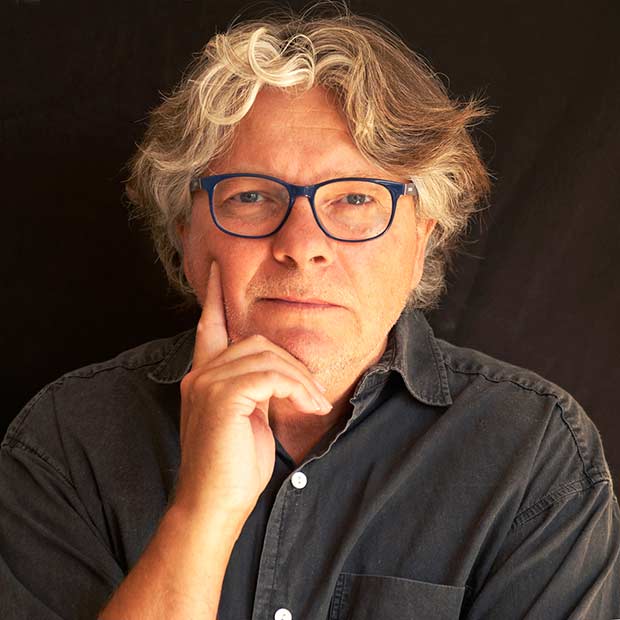 Ahmed Eckhard Krausen / Courtesy of the Artist
Ahmed Eckhard Krausen / Courtesy of the Artist
Born and raised in the formerly industrial Ruhr Area in Germany Ahmed Eckhard Krausen is a freelance photographer based in Copenhagen, Denmark.
Despite completing his education as a mechanical technician in 1989 and an ensuing career in mechanical engineering, he felt challenged and inspired to learn and pursue the art of photography. His artistic angle has been inspired by his position as a European Muslim convert. Therefore, in 1997, Krausen began his photographic project ‘Islam in Europe’. The exhibition ‘Mosques in Europe - European Mosques’ is a part of the project. The aim is to show the diversity of Islamic expressions and how Islam is interpreted in the physical space by European Muslims. This includes not only mosque architecture, but also Muslim graveyards, Muslim rap, graffiti, poetry, calligraphy and more. Another important aspect of the project is highlighting Islam’s relationship to the environment with an emphasis on ‘green’ mosques. In addition, the project also highlights the relationship between European and Islamic literature.
Krausen explains the concept of the exhibition: “The purpose of the exhibit is to portray the multifaceted, open and peaceful manifestation of Islam in Europe. It is hoped that this will offer a powerful visual counterweight to other negative portrayals of Islam that are currently in circulation in the West. It is a proven fact that a picture is worth 1000 words; therefore the exhibition is an important contribution for education and dialogue. Because many Muslims think in groups, nationalities, parties and similar categories, this exhibition should also open the door for the dialogue between Muslims.â€
The traveling exhibition consists of 100 images in color and b/w, 45cm x 30cm and 60cm x 40cm in size, with motives of Islamic architecture and portraits of Muslims from different parts in Europe. The exhibition includes also a photographic interpretation of the poets Johann Wolfgang von Goethe (1749- 1832) and Sir Mohammad Iqbal (1877-1938).
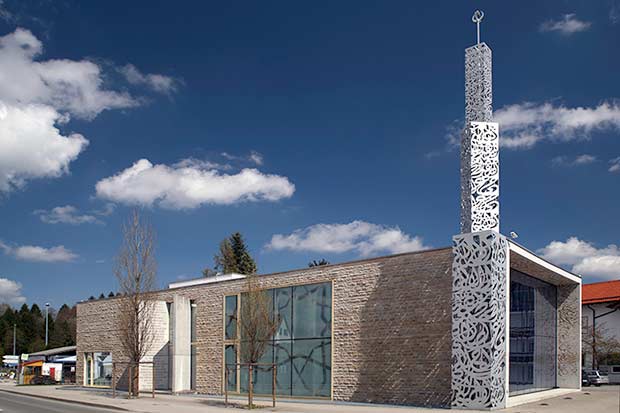 Ahmed Krausen / The mosque in Penzberg in South Germany / ©2014 Ahmed Eckhard Krausen
Ahmed Krausen / The mosque in Penzberg in South Germany / ©2014 Ahmed Eckhard Krausen
Ahmed Eckhard Krausen told us: "The mosque is located in the little town Penzberg in South Germany close to the Alps and was ready in 2005. The architect is Alen Jasarevic from Bosnia and Herzegovina. The aim of the architect was to design a mosque added to the typical South German environment. A calling to the prayer is not allowed in Germany, therefore the Azan is “written†as calligraphy in the minaret."
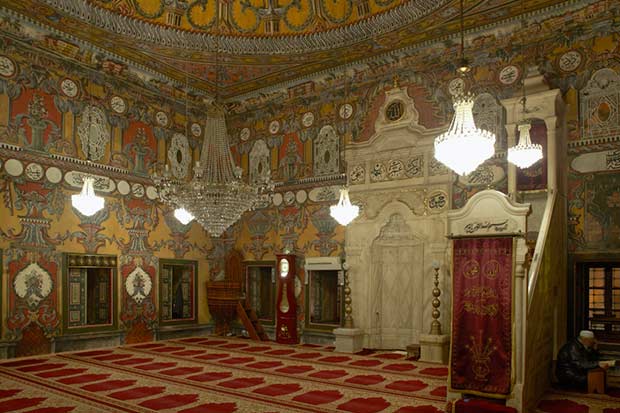 Ahmed Krausen / The prayer hall of the Pasha Cammii, in Tetovo with indoor decoration / ©2014 Ahmed Eckhard Krausen
Ahmed Krausen / The prayer hall of the Pasha Cammii, in Tetovo with indoor decoration / ©2014 Ahmed Eckhard Krausen
Ahmed Eckhard Krausen captures the prayer hall of the Pasha Cammii (Mosque) and gives us a brief historic background: "The Pasha Cammii in Tetovo, Macedonia built by the end of the 15th century, is a representative example and unique artistic, achievement of an Ottoman religious monument in Macedonia, with a specific outdoor and indoor decoration. For centuries this mosque has continuously preserved its religious and educational upbringing function with social and cultural meaning. Today´s architectural form and decoration were created after the second half of the 19th century (1833/34), when the renowned Abdurrahman Pasha of Tetovo ordered the reconstruction of the mosque, which was burned in the great fire that spread over the city by the end of 17th century."
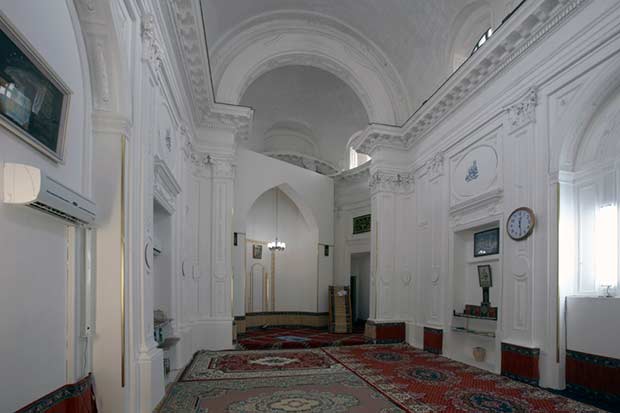 Ahmed Krausen_The mosque in Palermo / ©2014 Ahmed Eckhard Krausen
Ahmed Krausen_The mosque in Palermo / ©2014 Ahmed Eckhard Krausen
In Europe we can find mosques located in former churches. The Mosque in Palermo is such an example. Ahmed Eckhard Krausen explains: "The Arab name of Palermo was 'Balarm'. The city was an Arab emirate and described in 973 as ‘the city of the 300 mosques’ by the eminent Arab traveler and explorer Ibn Hawqal. The mosque today is located in the former Catholic San Paolino dei Giardinieri church. The church was badly damaged during the WW2."
 Ahmed Krausen / The wooden mosque in Kruszniany / ©2014 Ahmed Eckhard Krausen
Ahmed Krausen / The wooden mosque in Kruszniany / ©2014 Ahmed Eckhard Krausen
"The wooden mosque in Kruszniany, was built in 1871 and is the oldest mosque in Poland. Over time, the Turk-Tatar immigrants lost their original Tatar language. As early as the 17th century, they were linguistically adapted to their Slavic environment. Today's descendants of these Tatars speak Polish, Lithuanian, or a Belarusian dialect," the artist explains the historic background.
_The_Mezquita_Catedral_in_Cordoba,_Spain__(Right)_The_present_mosque_in_Cordoba_Mezquita_de_los_Andaluce.jpg) Ahmed Krausen / (Left) The Mezquita Catedral in Cordoba, Spain / (Right) The present mosque in Cordoba 'Mezquita de los Andaluce' / ©2014 Ahmed Eckhard Krausen
Ahmed Krausen / (Left) The Mezquita Catedral in Cordoba, Spain / (Right) The present mosque in Cordoba 'Mezquita de los Andaluce' / ©2014 Ahmed Eckhard Krausen
The architecture in Spain has always been an inspiration to artists. Ahmed Eckhard Krausen combines two photos and gives us a brief history of the architecture seen on the photo above: "The construction of the building began in the year 785 by Emir Abdel Rahman I. It became the main mosque for the city, which was then under Moorish rule. By 1009, it had been extended to make it the world’s third largest mosque. Then in 1236, it was consecrated as a cathedral during the Christian Reconquista."
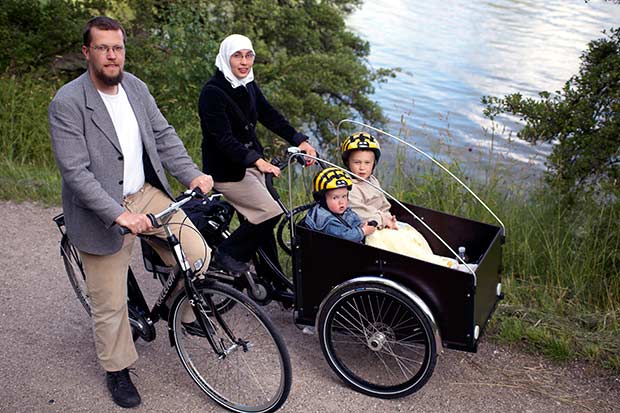 Ahmed Krausen / The Danish Muslim Peter Abdullah and his family during a weekend cycling trip in a Copenhagen park / ©2014 Ahmed Eckhard Krausen
Ahmed Krausen / The Danish Muslim Peter Abdullah and his family during a weekend cycling trip in a Copenhagen park / ©2014 Ahmed Eckhard Krausen
The verse from Qur’an brings us all closer: "O Mankind! We created you from a single (pair) of a male and a female and made you into nations and tribes that ye may know each other (not that ye may despise each other)." (Qur’an, chapter 49, verse 13).
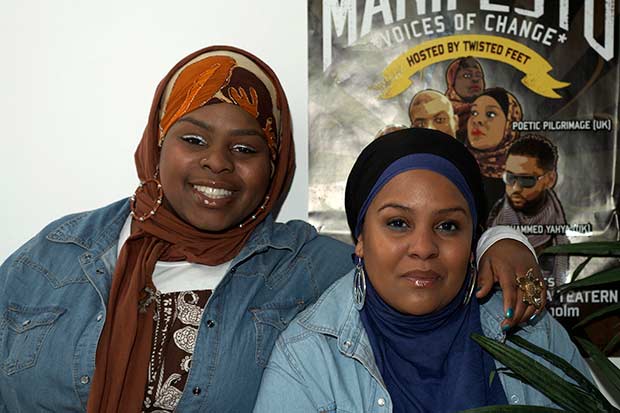 Ahmed Krausen / Sukina and Muneera / ©2014 Ahmed Eckhard Krausen
Ahmed Krausen / Sukina and Muneera / ©2014 Ahmed Eckhard Krausen
The exhibition shows also photos of Muslims in Europe and Krausen explains: "Sukina and Muneera came to the UK from Jamaica with their parents. They went to school together in Bristol and now live in London. Some years ago they converted to Islam. Today, they are known for their inspirational Islamic Hip Hop. The sound of their group ‘Poetic Pilgrimage’ combines soul, reggae and Afro beat."
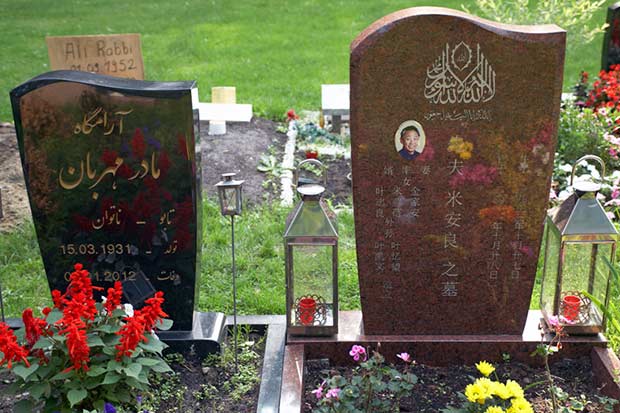 Ahmed Krausen / Muslim graves in Hamburg, Germany / ©2014 Ahmed Eckhard Krausen
Ahmed Krausen / Muslim graves in Hamburg, Germany / ©2014 Ahmed Eckhard Krausen
Another interesting aspect of presenting Muslims in Europe is to show their graves. The photo above presents Muslim graves in Hamburg, Germany. Ahmed Krausen adds a verse from Qur’an: “And to Him you shall be brought back†(Qur’an, chapter 36 ‘Ya Sin’, verse 2).
‘Mosques in Europe - European Mosques?’ exhibition is organized in cooperation with the Institute for Islamic Theology in Osnabrück and supported by the Federal Ministry of Education and Research, the Lower Saxony Ministry for Science and Culture, Osnabrück City of Peace, the Osnabrück University, Dr. Buhmann Stiftung and following Muslims associations: Kulturhaus der europäischen Muslime e.V., Shura Niedersachsen e.V. and the Federation Turkish - Islamic Union.
This exhibition has been displayed in Osnabrück (September 2013 and March 2014), in Mannheim (February 2014) and is currently on view at the Eberhard Karls University - University Library, Bonatzbau in Tübingen. The exhibition will run until July 31, 2014.
Comments
Add a comment